It’s twice the size of Texas and still growing. The Great Pacific Garbage Patch is the largest accumulation of plastic waste in the world, but by no means is it the only place where cast-off plastic is accumulating in the world’s waterways. Now, a non-profit called The Ocean Cleanup believes it can dramatically reduce this waste over the next two decades. And it’s getting a helping hand from Kia which intends to turn much of that junk into useful parts for its vehicles.
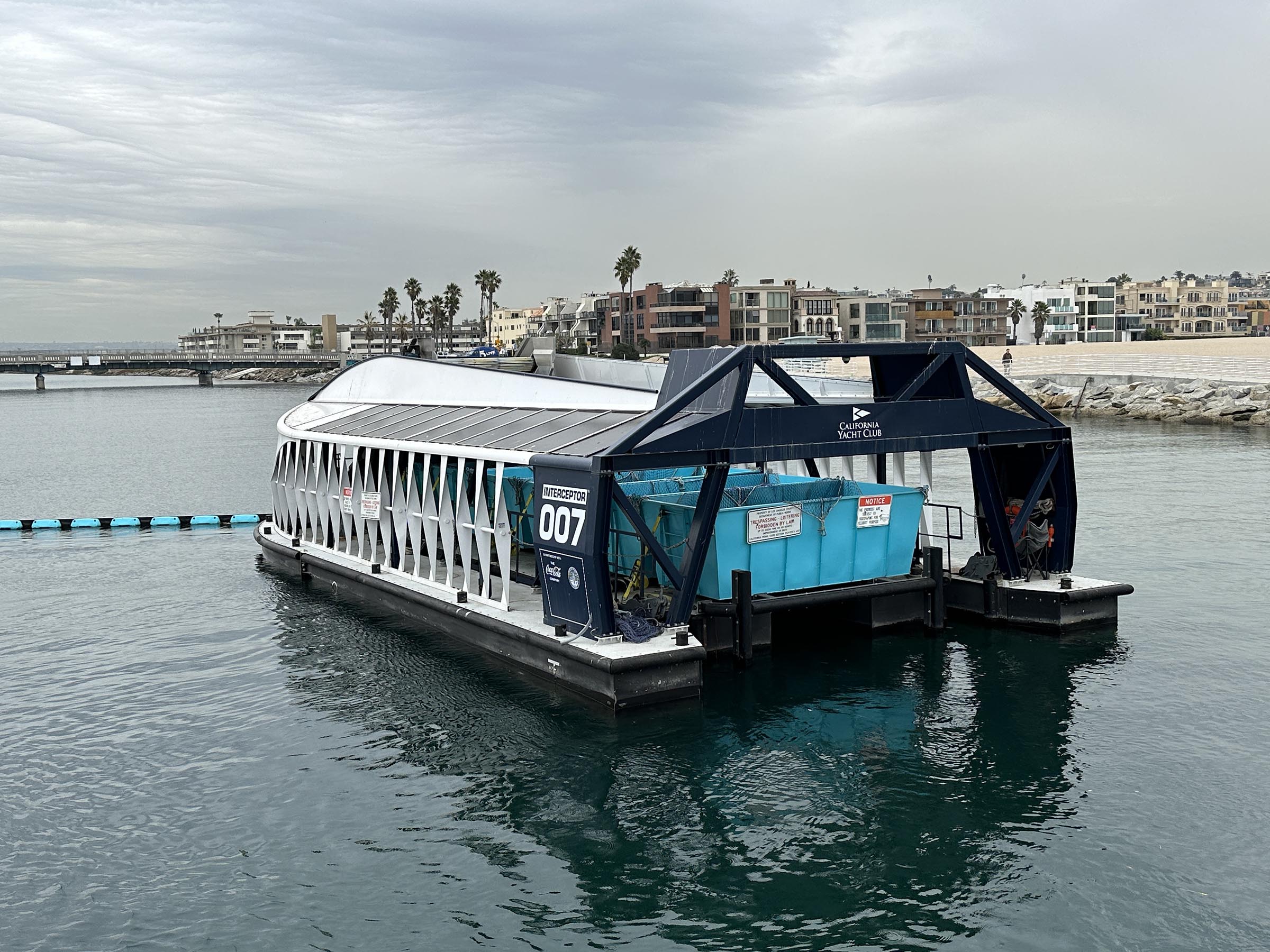
The Ocean Cleanup’s Interceptor 007 is one of several vessels part of the group’s massive effort to clean up bodies of water around the world.
The normally sunny Southern California skies have turned steel gray. A cool breeze is picking up speed and the first raindrops begin to fall as our boat pulls out of the harbor at Marina del Rey. That’s exactly what Alex Tobin was hoping for.
Our journey is a short one. Minutes later, we’ve pulled into nearby Ballona Creek and tie up to Interceptor 007. It’s as far upstream as we can go, a pearl-like string of floating barriers spiral off from the barge before hooking into the seawalls on either side of the waterway.
The Great Pacific Garbage Patch
When the sun shines, as it normally does here, the creek is all but stagnant. But it quickly picks up its pace when it rains. And that, explains Tobin, helps flush out all the plastic waste that finds its way into Ballona Creek. But instead of then flowing into the ocean, it now gets snagged by the Interceptor. Clones of this pilot vessel could soon pop up on waterways around the world, while other waste-gathering ships target sites, like the Great Pacific Garbage Patch where uncounted tons of plastic have already made it into the oceans.
The ”patch” is actually a region of the Pacific, about halfway between Hawaii and California. At 618,000 square miles, it’s twice as large as Texas and three times the size of France, “the largest of the five offshore plastic accumulation zones in the world’s oceans,” according to The Ocean Cleanup. That’s the non-profit running the Interceptor, among other ships designed to attack the worsening build-up of seaborne plastic.
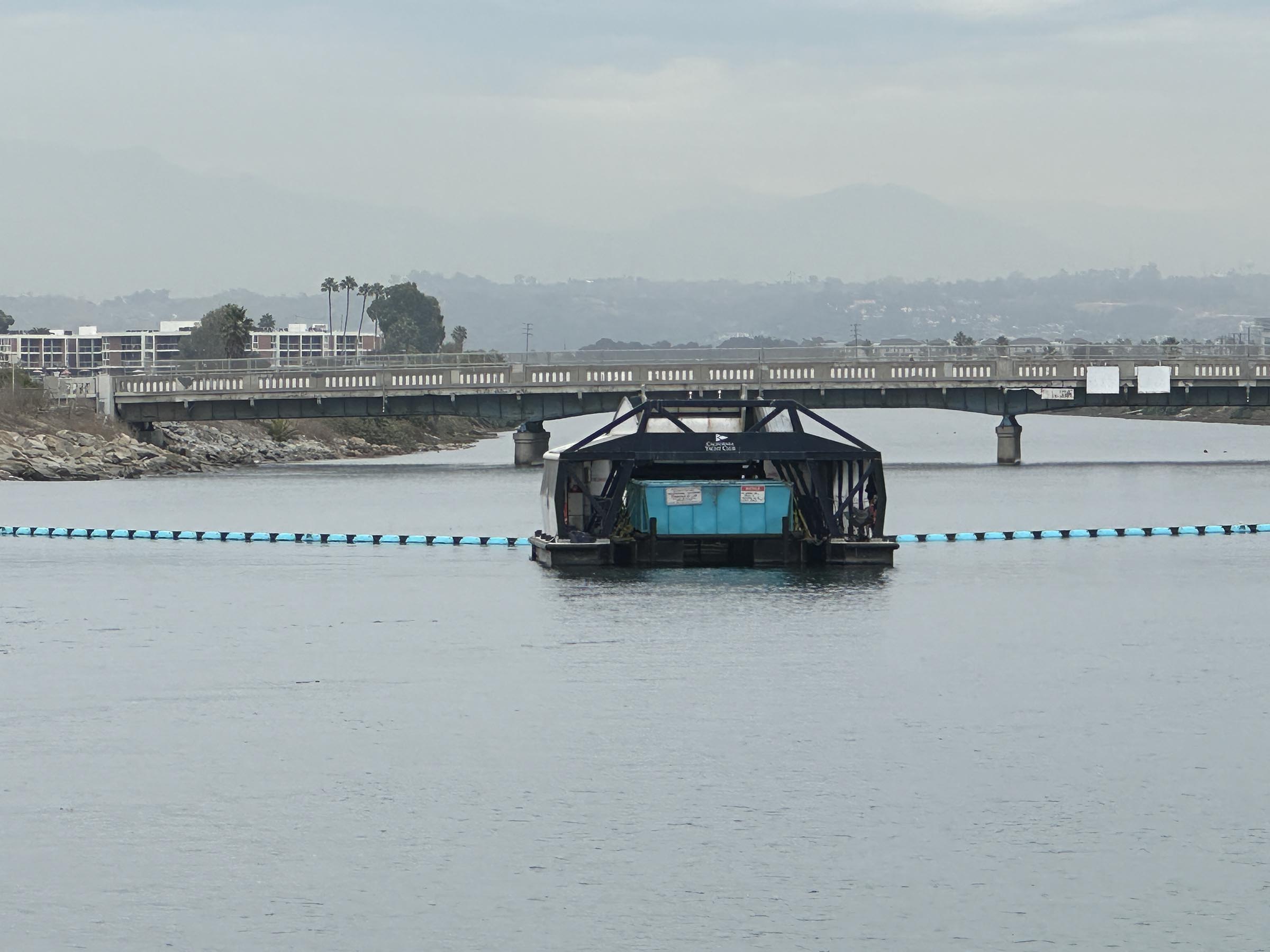
The plastic waste that finds its way into Ballona Creek that use to flow out to the ocean now gets snagged by the Interceptor.
It estimates somewhere between 1.15 million and 2.41 million metric tonnes of plastic waste enter the ocean each year, much of it from the world’s rivers — though there’s also plastic lost to the seas, such as fishing nets, from shipping and fishing fleets. Only a small amount settles to the bottom. Much floats on the surface.
Onboard the Interceptor
We scramble onto the Interceptor, a sort of barge within a barge. The normally unmanned and solar-powered vessel is primarily made up of three components. On the upstream side there’s a contraption that looks a bit like the waterwheel on the old steamships that once plied the Mississippi. But it’s not used for propulsion. Turned on when the Creek starts flowing, it captures whatever waste is floating on Ballona Creek, much of it plastic. There are plenty of old water bottles and other familiar detritus, with the occasional mattress and, this morning, an old workman’s tool bag.
The waste is transferred onto a conveyor belt and then dumped into a series of six 3-tons waste bins. They’re actually mounted atop a separate barge that slides out of the U-shaped Interceptor. When full, they’re moved off to a site along shore where the waste can be offloaded. Last year, this vessel alone collected 85 tons of waste, most of it plastic.
Cutting off the supply
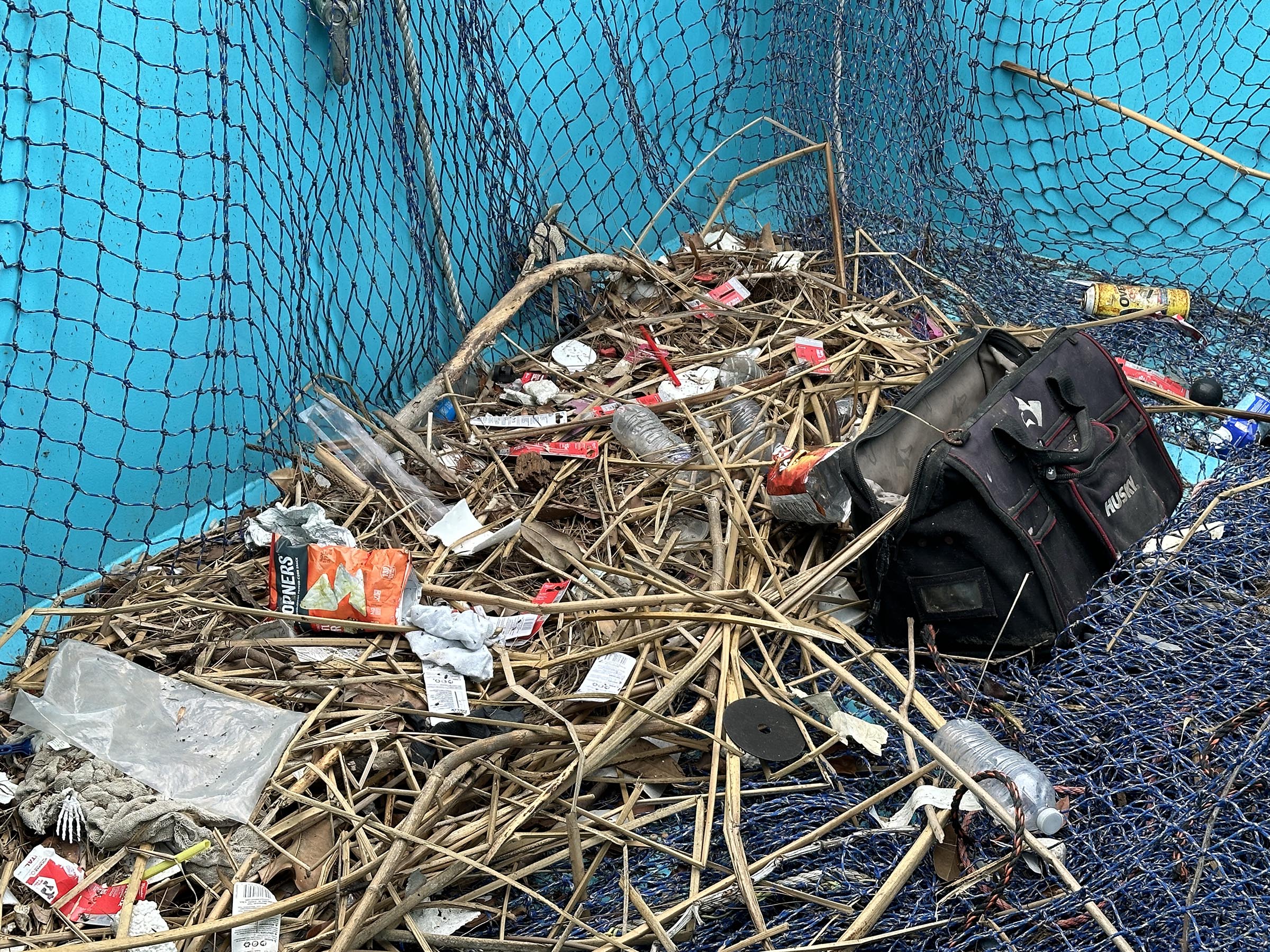
The waste is transferred onto a conveyor belt and then dumped into a series of six 3-tons waste bins.
Currently, The Ocean Cleanup operates 12 Interceptors in seven countries. It eventually plans to float 1,000 of them around the world. That includes Guatemala which has “the single-largest polluting river in the world,” said Tobin, an executive with The Ocean Cleanup.
But the primary focus is on the Pacific coast of Asia which has become one of the world’s leading source of plastic waste flowing into the oceans.
The Klang River in Malaysia, noted Tobin, empties out more plastic waste in a day than Europe’s Rhein River does in a full year.
All told, about 80% of the plastic in our oceans flows out of rivers. By carefully targeting just the dirtiest 1% of those waterways, the non-profit claims, it can help, quite literally, stem the tide.
Cleaning the oceans
Cutting off the supply is, however, just the first step. Even as it creates an effective blockade along the dirtiest rivers, The Ocean Cleanup is taking aim at the floating garbage patches.
To do that, it sends out trios of ships on six-week missions in deep water. Two drag large nets that perform a similar function to the floating collectors used by the Interceptor on Ballona Creek. They funnel waste to a third, collector ship.
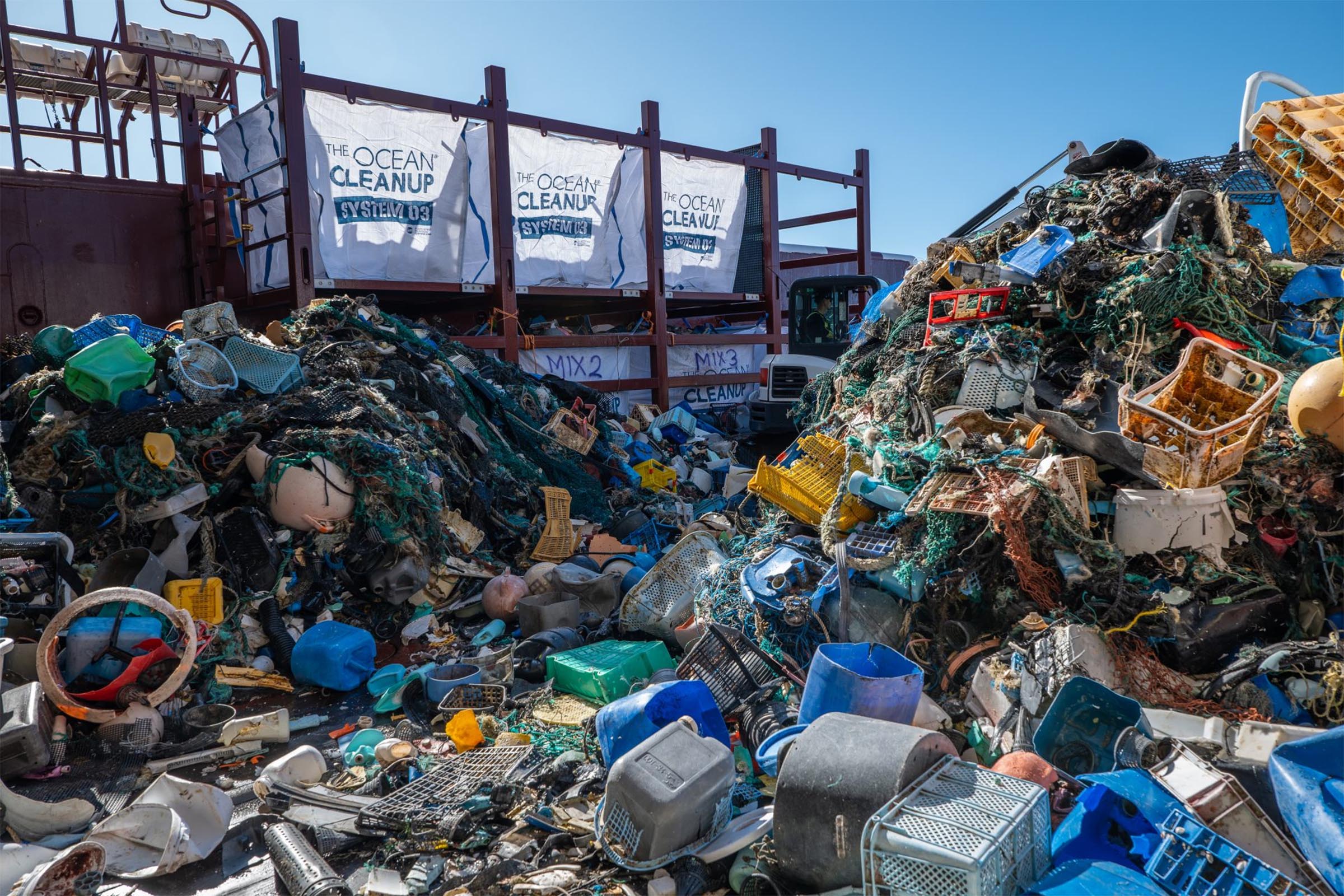
There are plenty of old water bottles and other familiar detritus, with the occasional mattress and, this morning, an old workman’s tool bag.
The goal is to have 10 of these three-ship teams in operation, Tobin explained. “The goal is to eliminate 90% of floating ocean plastic by 2040.”
That’s where Kia comes in
Kia is one of The Ocean Cleanup’s numerous corporate sponsors, Coca-Cola being another major name. But the South Korean carmaker sees the opportunity for more than just a feel-good benefit from the partnership. One of the challenges the non-profit environmental group faces is what to do with all the waste it collects. It would prefer not to just bury all that plastic, said Tobin.
At the LA Auto Show last month, Kia demonstrated one possible solution. It rolled out several concepts which “will work their way (into production) in the very near future as Kia EVs,” said spokesman James Bell. And they will use “some of the materials” recycled from all that ocean waste. The new Kia EV9 is already making extensive use of recycled plastics.
A number of other manufacturers have also begun using — or working on ways to use — ocean plastic waste.
What’s at stake
While few folks — other than deep sea fishermen or tourists on cruise ships — ever lay eyes on the Great Pacific Garbage Patch and other “gyres,” the impact is becoming substantial.
Plastics generally take thousands of years to fully break down. But constant exposure to sunlight, as well as the erosive action of the waves, eventually breaks waste down into tiny, even microscopic particles. Researchers are finding it increasingly common for those particles to be consumed by sea life, whether fish, birds or mammals. And, as it works up the food chain, humans are consuming it, as well.
As a result, researchers believe it’s increasingly important to reduce the flow of plastic waste into our waterways – and then clean up what’s there — as soon as possible.

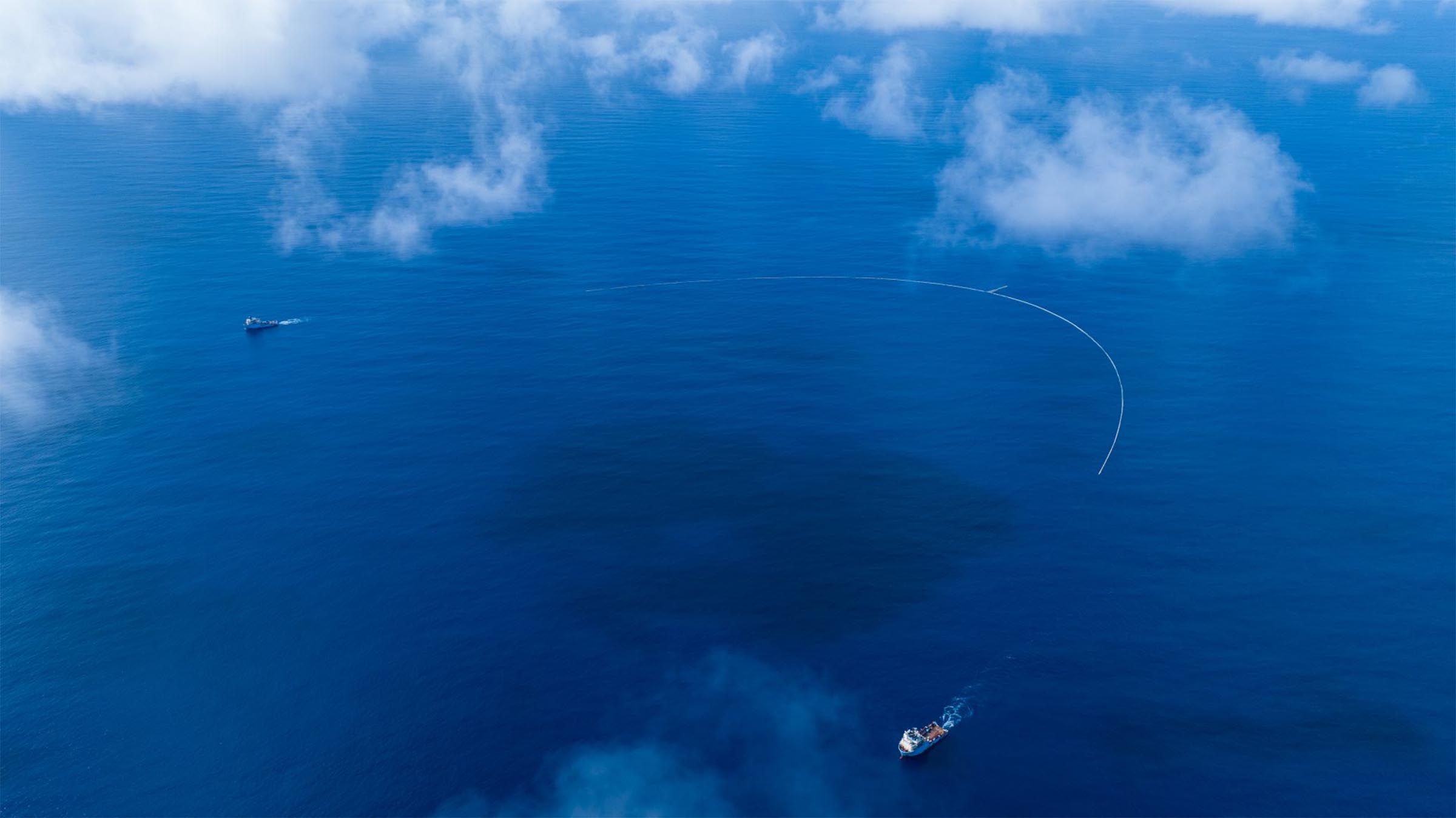
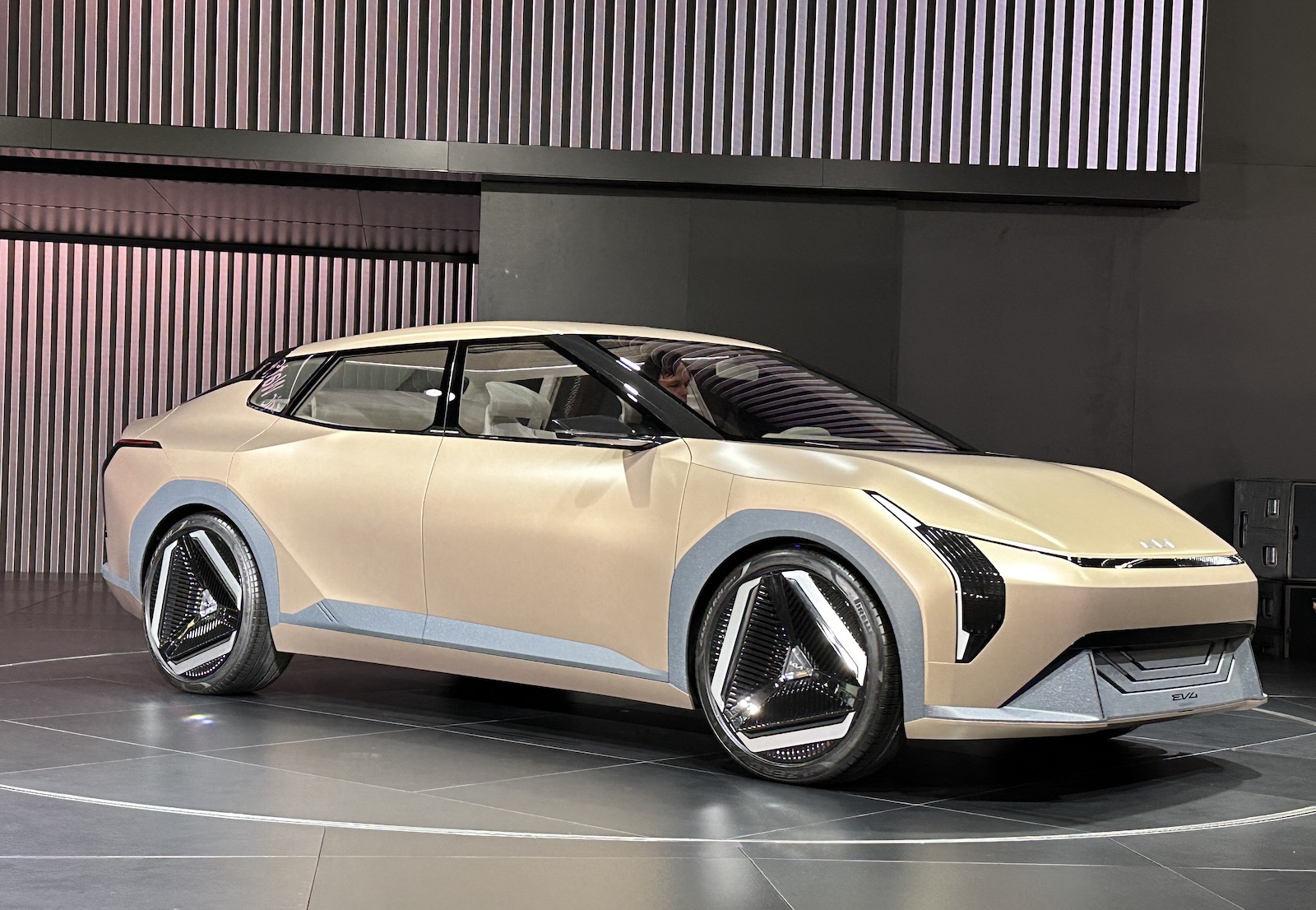
0 Comments